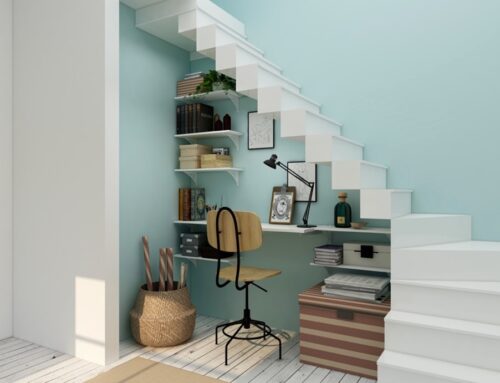Every year, there are many injuries and deaths due to home accidents. It’s bad enough when it involves a family member; however, it also can be financially devastating when non-family are involved. For family members, you are looking at medical and emergency room costs, possible rehabilitation costs, and long-term grief if the accident results in a death. For non-family, you may be looking at a lawsuit!
The thing is … most home accidents can be prevented. It generally only takes a little effort to ensure everyone that comes on to your property or in your home remains safe.
I’m listing many of the causes of deaths and injuries in and around your home. The most deadly will have statistics; others are a heads up of what to take notice in your home. Most will have a web site address to help you consider what you should do about the problem.
Falls
NSC: In 2008, there were 118,000 deaths due to accidental falls – 54,500 were in the home. This doesn’t even account for non-death injuries. NCIPC: Most falls were elderly with balance problems – 15,800 in 2005. There were 102 child deaths over a 10 year period due to falls from home playgrounds and 29 from home windows. CDC: Hospital emergency rooms treat more than 200,000 children each year ages 14 and younger for playground-related injuries. Traumatic Brain Injuries: Almost half a million (473,947) emergency room visits for TBI are made annually by children aged 0 to 14 years. Adults aged 75 years and older have the highest rates of TBI-related hospitalization and death.
Falls can occur due to:
- items placed where they shouldn’t be (i.e. toys left on stairways or on sidewalk),
- defective places (i.e. uneven sidewalk, pipes sticking up in yards, no hand rail on stairs, etc.)
- unsteady equipment or bad balance (i.e. playground equipment not anchored down well, elderly on ladder, ladder not on good foundation, children on bicycles, etc.)
Links
http://www.cdc.gov/homeandrecreationalsafety/falls/index.html
http://www.cdc.gov/homeandrecreationalsafety/falls/checklistforsafety.html
http://www.cdc.gov/homeandrecreationalsafety/Playground-Injuries/playgroundinjuries-factsheet.htm
http://www.cdc.gov/ncipc/pub-res/tbi_toolkit/patients/preventing.htm
Poison
NCIPC: There are over 75 poisonings daily in the U.S.; two of these daily are children. In 2006, 27,531 deaths; 26,400 were from overdoses; and 13,200 involved prescription drugs with 80% being children.
Causes include adults not reading and following prescription labels correctly or combining with alcohol; while children mimic the adults and bottles are not safely stored.
http://www.cdc.gov/Features/poisonprevention
Fires
CDC: There are almost 10 fires daily in the U.S. Most are from smoke inhalation rather than burns. Small children and older adults are the most vulnerable, not being able to get out of a burning area. 80% happen in homes; most are started with cigarettes; and 40% involve alcohol. 40% of the total are homes with no smoke alarms.
Besides the above, causes can include children playing with matches, bad electrical wiring, use of portable heaters, and cooking fires.
http://www.cdc.gov/Features/fireprevention
http://www.cdc.gov/HomeandRecreationalSafety/Fire-Prevention/fireprevention.htm
Power Tools
According to Forbes, there are 400,000 workshop casualties every year. They list the 10 most dangerous power tools as: power nailers, chain saws, table saws, snowblowers, circular saws, riding lawnmowers, power drills, backhoes, air compressors, and wood chippers.
The main cause is inexperience and/or using the tools in an unsafe manner.
http://www.forbes.com/2009/12/21/most-dangerous-tools-business-healthcare-tools.html
Cleaning
Dangers Of course, falls are first in your mind. Here are others: mixing bleach and ammonia creates lethal chlorine gas; stirring up dust/allergens; and getting electric shocks while using water. Additionally, finding you are allergic to some of the strong cleaning agents or not following the instructions for use.
Being in too much of a hurry to read and follow instructions or carelessness are the main causes.
http://firstaid.about.com/od/injuriesathome/tp/09_Spring_Cleaning.htm
Gardening
Dangers include pesticides, severe sunburns, allergens, insect bites/stings and snakes, and poisonous plants.
Not reading instructions and carelessness cause most gardening accidents.
http://firstaid.about.com/od/injuriesathome/tp/07_gardening.htm
Holidays
Too many electrical uses for your home wattage; July Fourth: fireworks burns & fires; Halloween: candy & choking, hit by vehicles, costumes catching fire when near lit jack-o-lanterns; Thanksgiving: knife cuts, oven burns, and eating too much; Christmas: fires, falls, eating too much/choking, children/pets ingesting poisonous plants.
Causes – Fourth: only experts should set off fireworks; Halloween: candy eating should be only at home with adult supervision; costumes not illuminated to be seen; costumes are homemade & not flame retardant; Thanksgiving: carelessness; Christmas: carelessness, too dry tree near flame, no screen in front of fireplace, not checking toxicity of holiday plants.
Check throughout your home – indoors and out – for safety factors that need to be addressed. Be safe!
- CDC: Center for Disease Control,
- NCIPC: CDC’s Nation Center for Injury Prevention & Control
- NSC: National Safety Council



